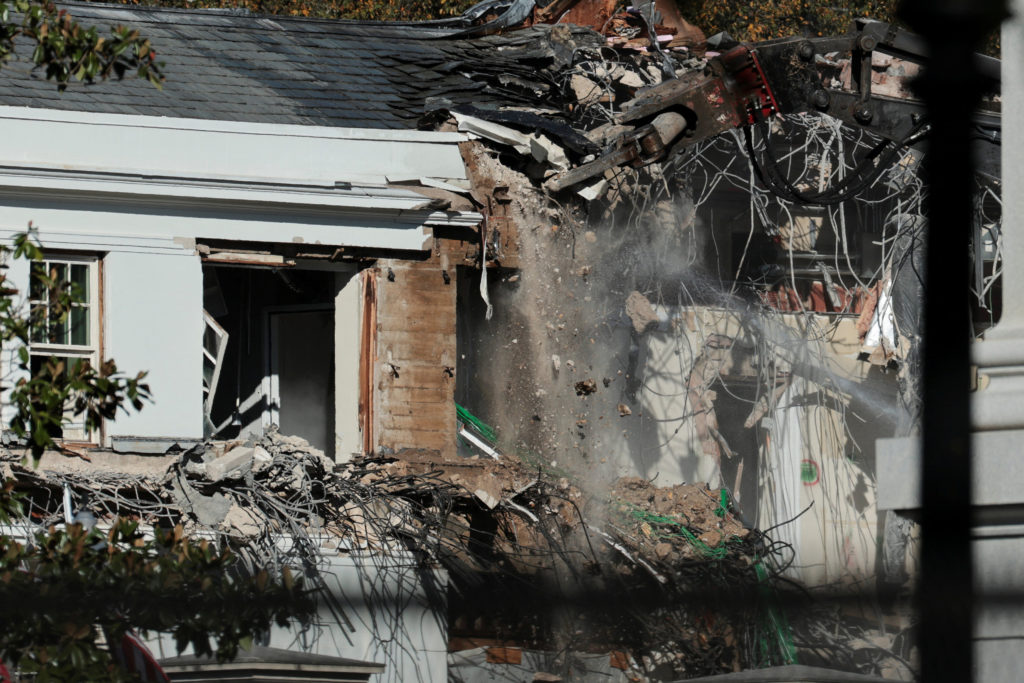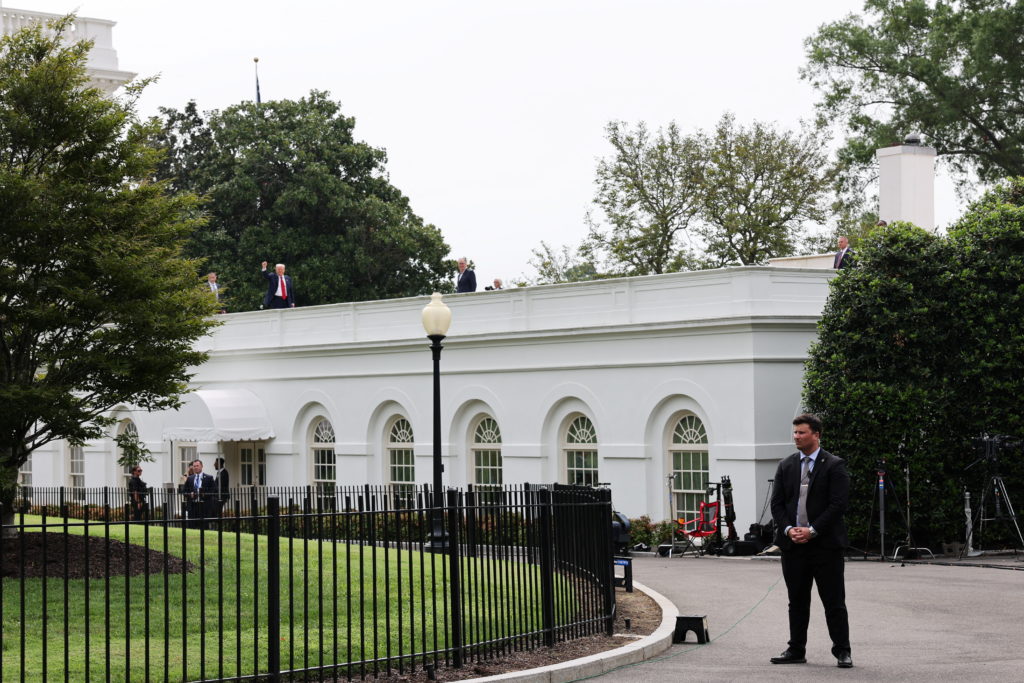WASHINGTON (AP) — Construction on the $250 million ballroom that President Donald Trump wants to add to the White House began this week as construction crews began demolishing the facade of the east wing where the new room will be built.
The Republican president and senior White House officials initially said nothing would be demolished during construction.
PHOTOS: The White House begins demolition of the East Wing to build Trump's ballroom
The 90,000-square-foot ballroom will dwarf the main White House building itself, being nearly twice as large. According to Trump, it can accommodate 999 people.
Trump said on social media that the ballroom won't cost taxpayers a dime because it will be privately funded by “many generous patriots, major American corporations and, really, you.”
Here are some things you should know about the latest White House construction project.
Why is Trump building a ballroom?
Trump says the White House needs a large entertainment room and has complained that the East Room, currently the largest room in the White House, is too small and holds about 200 people. He disapproves of the past practice of presidents holding state dinners and other large events in tents on the South Lawn.
Who will pay the $250 million construction cost?
Trump says the project will be funded with private donations and that no public money will be spent on the ballroom. The White House promised to release information about which individuals and companies pledged or donated money and hosted some of the donors to a dinner in the East Room last week, but has not released a comprehensive list and breakdown of funds.
REGARD: Trump hosts dinner for donors to $250 million White House ballroom project
About $22 million for the project came from YouTube, a Google subsidiary, as part of a recent settlement of a lawsuit Trump filed against the company in 2021.
The White House also hasn't said how much of its own money Trump is contributing.
Why demolish part of the east wing to build the ballroom?

A demolition crew dismantles the facade of the East Wing of the White House, where President Donald Trump's planned ballroom is being built on October 21, 2025. Photo by Jonathan Ernst/Reuters
Traditionally the social side of the White House, the East Wing is located across East Executive Avenue from the Treasury Department. Tourists and other guests have access to events here.
The president and his chief spokeswoman, Karoline Leavitt, said over the summer that the White House itself would remain intact while the ballroom was built.
“It will be near, but not touching,” Trump said. “Nothing will be torn down,” Leavitt added.
Turns out that wasn't the case.
The White House said some demolition work will be necessary because the East Wing, the traditional home of the first lady and her staff, is being modernized as part of the ballroom project.
Can Trump build a ballroom?
He is moving forward with construction despite no approval from the National Capital Planning Commission, the executive agency responsible for construction and major renovations of government buildings in the region.
READ MORE: The White House says it will begin construction on a $200 million ballroom in September
Trump appointed a top White House adviser, Will Scharf, to head the commission. Scharf distinguished between demolition work and reconstruction work and explained that the Commission only needs to examine the latter.
What's happening to the East Room?
According to Trump, it will be a place where guests can mingle, sip cocktails and eat appetizers until they are called to the ballroom for dinner. Trump said a number of windows in the room would be removed to create a passageway to and from the ballroom.
What will the new ballroom look like?
Renderings released by the White House suggest a strong resemblance to the gilded ballroom at Mar-a-Lago, Trump's private club and home in Palm Beach, Florida.
The project has also grown larger since his announcement, from 650 seats to 999 people, large enough to accommodate an inauguration party if necessary, he said at a recent White House dinner for donors. Windows will be bulletproof, he said.
When will the ballroom be finished?
The White House has said the ballroom will be ready before the end of Trump's second term in January 2029 – an ambitious timeline.
Has Trump made any other changes in the White House?
Yes. He extensively remodeled the Oval Office, adding numerous portraits, busts, and gold-colored decorations. He turned the rose garden into a stone-covered terrace, installed towering flagpoles on the north and south lawns and decorated an exterior wall with portraits of every president except his immediate predecessor, Democrat Joe Biden.
Trump also said he renovated the bathroom in the famous Lincoln Bedroom in the private living quarters and installed marble floors in a doorway leading to the South Lawn.
How has construction changed the White House over the years?
Presidents have expanded the White House for a variety of reasons since construction began in 1792, and Trump aides say his decision to build a ballroom follows that long tradition.
According to the White House Historical Association, many of the earlier projects were criticized for being too expensive or too elaborate but were ultimately accepted.
Thomas Jefferson added the east and west colonnades.
Andrew Jackson built the north portico on the Pennsylvania Avenue side of the White House to match the south portico that James Monroe added after the original mansion was rebuilt after the British burned it during the War of 1812.
Theodore Roosevelt added the West Wing to provide special rooms for the President and key staff, while Franklin D. Roosevelt added the East Wing, which over time became the home of the First Lady's staff and for social events.
One of the most significant White House renovations occurred under Harry Truman, when the mansion's structure was found to be so unstable that he ordered a complete gutting of the interior, which lasted from 1948 to 1952. The project, which included Truman's addition of a balcony on the second floor of the south portico, was extremely controversial.
Other changes include the creation of the Rose Garden during John F. Kennedy's administration and Richard Nixon's decision to convert an indoor swimming pool built for FDR's physical therapy into a workspace for the growing White House press corps.
A free press is a cornerstone of a healthy democracy.
Support trustworthy journalism and civil dialogue.
